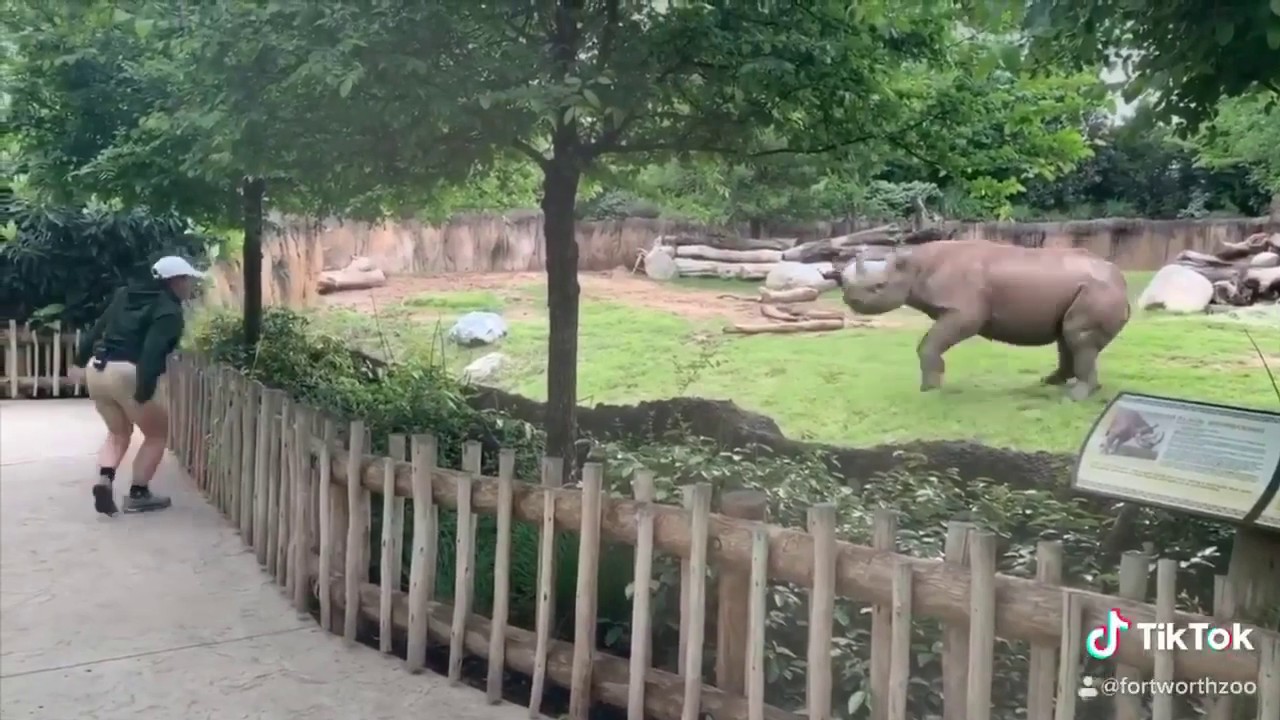- Significance and impact of the Fort Worth Zoo rhino’s energetic behavior and its influence on public awareness of rhinos.
- The biological and environmental factors that can trigger such spirited behavior in rhinos.
- The role of zoos in promoting wildlife conservation and education through engaging exhibits and content.
- Understanding the behavior and lifestyle of rhinos in captivity versus the wild.
- Importance of wildlife conservation programs addressing rhino population challenges globally.
In recent years, a video capturing a rhino at the Fort Worth Zoo displaying exuberant energy, commonly known as getting the zoomies, has captivated audiences worldwide. This phenomenon has not only brought joy to viewers but also sparked interest in understanding rhinos’ behavior and the broader implications for wildlife conservation. The event is a reminder of the critical role zoos play in educating the public and promoting conservation efforts.
Rhinos exhibiting zoomies – sudden bursts of playful energy – provide a rare glimpse into the robust and sometimes surprising behaviors of these magnificent creatures. At first glance, the behavior might seem out of character for these seemingly slow-moving giants. However, under optimal conditions, rhinos can display high energy levels, debunking common stereotypes about their sluggishness. This type of behavior can occur in both young animals bolstering their developing muscles and fully grown individuals experiencing periods of excitement or comfort in their environment.
The video from Fort Worth Zoo offers invaluable insights into rhinoceros behavior, often misunderstood by the general public. Rhinos, particularly young ones, engage in such activities as part of their natural play behaviors, which are crucial for their development. Physically, play is critical in honing their motor skills and strengthening muscles. Behaviorally, these activities enhance social bonding, reduce stress, and promote overall mental well-being, which is vital for animals in captivity where psychological stressors, unlike those in the wild, can challenge their mental health.
The Fort Worth Zoo rhino’s video highlights the importance of creating enriching environments that stimulate and allow animals to express natural behaviors. Zoos today are not just about exhibition but about creating habitats that cater to the physical and psychological needs of animals. Exhibits are designed to resemble natural environments that encourage natural behaviors. This means ample space for movement, diverse terrains for exploration, and interactive elements that simulate challenges animals might face in the wild.
Fort Worth Zoo’s rigorous animal care standards and habitat designs underline a significant shift in zoo management toward more welfare-oriented practices. Proper management strategies, including regular health checks, a balanced diet tailored to each species’ nutritional needs, and structured activity plans, are vital components in maintaining the well-being of zoo animals. Animals like the rhino at Fort Worth Zoo respond well under such conditions, exhibiting behaviors that would be typical in their natural counterparts, such as sprinting, playing, or even showcasing affection through vocalizations or physical touch with their keepers.
Moreover, these instances of the zoomies serve as a bridge connecting the public to wildlife conservation narratives, sparking conversations about the importance of maintaining genetic diversity and population numbers in global rhino populations. Zoos collaborate extensively with international conservation efforts to conduct scientific research and facilitate breeding programs to support endangered species. They play an instrumental role in facilitating global networks dedicated to preserving biodiversity through captive breeding and habitat restoration initiatives. Such programs ensure that animals like rhinos, threatened by habitat destruction and poaching, continue to exist for future generations, with some reserves even reintroducing zoos-reared individuals into the wild.
The public’s engagement with this energetic behavior reveals the importance of educational content that captures attention and stimulates dialogue about conservation. When zoo visitors witness these magnificent animals thriving and exhibiting high well-being levels, it imbues them with a sense of wonder and responsibility to support conservation efforts. Consequently, this awareness leads to increased support for zoos and affiliated conservation programs, entrusting them with the mission to safeguard endangered species. Educating the public on the significance of conservation, sustainable practices, and the threats posed by human encroachment and climate change becomes more effective through engaging visual content.
Understanding rhino behavior in both zoo settings and the wild necessitates comprehensive knowledge about their ecology. In the wild, rhinos are solitary creatures that require expansive territories for grazing, often leading to territorial behaviors to secure areas with abundant resources. Temperature variations, available resources, and the presence of other animal species can all influence their behaviors. Thus, creating enriched environments in captivity to simulate these conditions is crucial, allowing them to express similar behaviors and reduce stress.
Additionally, tackling the global challenges threatening rhino populations is fundamental to these efforts. Poaching driven by the illegal trade of rhino horn, habitat loss due to agricultural expansion, and climate change are formidable threats. Intensified conservation strategies include anti-poaching patrols, stricter trade regulations, and community-based conservation projects that involve local populations and aim to create sustainable livelihoods, aiming to reduce the incentive for poaching. These comprehensive efforts underscore the need for international cooperation and proactive policies to protect these majestic creatures.
In summary, the viral video of the Fort Worth Zoo rhino’s zoomies aligns with contemporary trends in wildlife conservation and zoo management to serve as educational and conservation platforms. By facilitating public understanding and engagement in conservation initiatives, these interactions inspire individuals to participate actively in preserving biodiversity. Our responsibility to safeguard rhino populations extends beyond zoo borders, inviting global community involvement to mitigate threats to all wildlife and promote sustainable solutions for coexistence.
*****
Source Description
Ever seen a rhino get the zoomies? Keeper Kylee paid a visit to 6-year-old southern black rhino Crockett yesterday and well …


